Many people eat fruits and vegetables for their nutritional value. However, vegetables and fruits can also be high-calorie lifesavers in a survival situation. If you want to stock up on high-calorie vegetables (and fruits), this article will provide a good overview of what you need to understand.
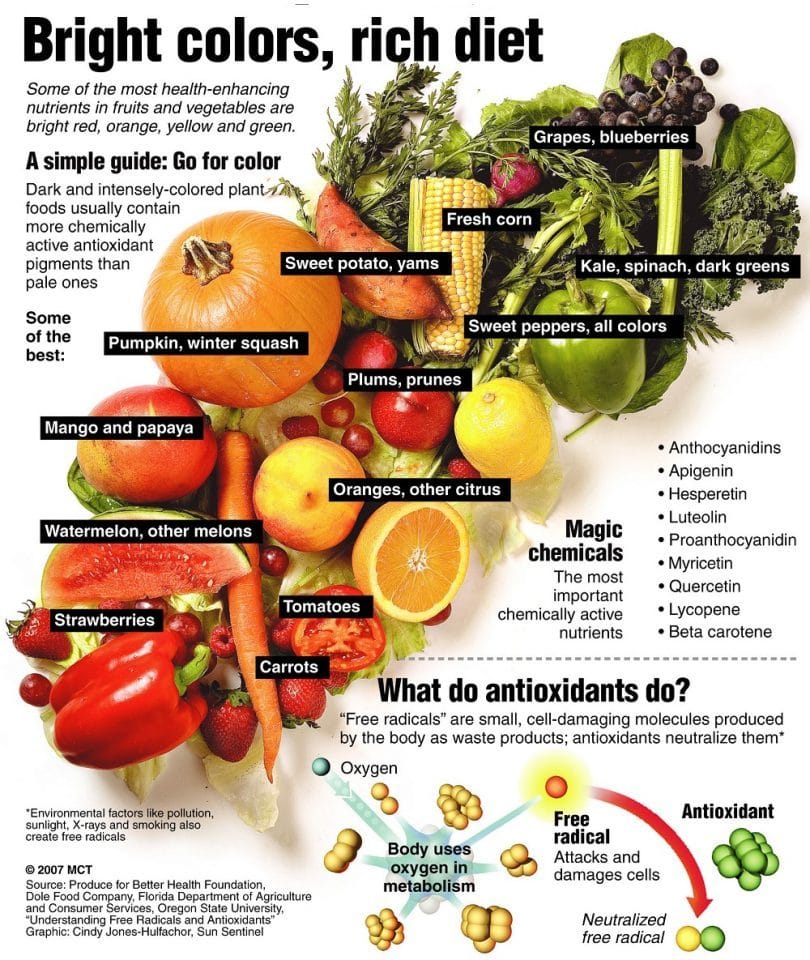
High-calorie food is essential for emergency situations and outdoor adventures. You’ll be glad you stored these foods if you find yourself in an SHTF situation.
If you are also interested in purchasing and storing your own Heirloom seeds, this small vendor provides a very good option already packaged and ready for storage.
List of High-Calorie Vegetables
Here’s a quick list of high-calorie vegetables measured in cups:
- Mashed potato – 250 cal
- Boiled soybeans – 250 cal
- Lentils – 230 cal
- Lima/Kidney beans – 200 cal
- Boiled corn on the cob – 185 cal
- Baked sweet potato – 180 cal
- Baked corn (kernel) – 160 cal
- Peas – 144 cal
- Carrots – 52 cal
While vegetables are often considered low-calorie foods, some are more calorie-dense than others. Most high-calorie vegetables are starchy items or legumes. Potatoes and root vegetables have the highest starch content. A small cup of mashed potatoes (with the skin) has 250 calories. A cup of boiled corn has 185 calories.
One potato, in general, has around 200 calories. The sweet potato has slightly fewer calories, which may be counter-intuitive given its name. One cup of baked sweet potato has about 180 calories.

A cup of boiled soybeans packs 250 calories, a big calorie punch for a vegetable. Other beans and legumes are great options because they also have protein. For example, a cup of lentils (high in protein) has about 230 calories.
While carrots aren’t considered a high-calorie vegetable, they can still amount to a substantial amount of energy. They don’t have as many calories as their starchy cousins but fall in between starchy vegetables and other regular veggies like salads, broccoli, etc.
Beets and squash also offer more energy and carbs like carrots. Combine these with potatoes, onions, or peas and you have a nourishing dinner.
Whether it is weight gain or weight loss, understanding where to start and the vegetables you are eating, is important. This book is a good start.
High-Calorie Fruits
Fruits are densely packed with calories and nutrients to keep you energized. Here is our list per 100 grams.
- Coconut – 385 cal
- Raisins – 324 cal
- Dates – 306 cal
- Prunes – 290 cal
- Avocado – 167 cal
- Olives – 149 cal
- Bananas – 90 cal
- Grapes – 68 cal
- Fresh figs – 66 cal (dried figs – 275 cal)
- Nectarines – 64 cal
- Cherries – 60 cal
Below the 60-calorie mark, we have mangos, pears, apples, kiwis, pineapples, papaya, oranges, plums, raspberries, strawberries, and watermelon.
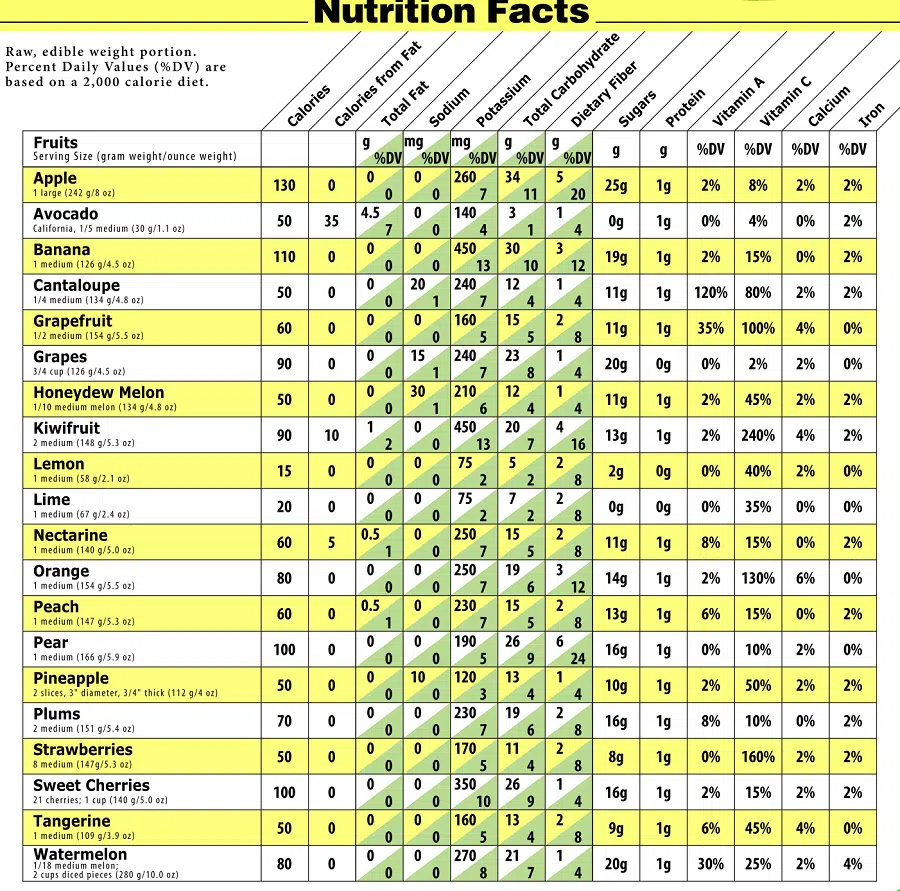
Preserving and Transporting Fruits and Vegetables
With the exception of dried figs, prunes, and raisins, the other fruits on our list are fresh. You will need to preserve them to keep them edible for longer periods of time.
Although this is a topic often debated, it’s important to note that fruits and vegetables alone won’t make a nutritionally complete meal in hard situations. If you want to survive in a demanding environment, you’ll need more items. These ingredients can be prepared at home, or bought in a store.
Preserving High-Calorie Vegetables and Fruits
Freeze drying and dehydrating are the two most popular methods for preserving fresh fruits and vegetables. These processes remove the moisture from the food, preventing it from spoiling. Our instructional piece on how to dehydrate food will tell you more about this process.
When moisture is removed from foods, microorganisms can no longer survive. Thus, the food is preserved for a long time. Freeze-dried foods have such low moisture contents that they can stay edible for decades.
Always freeze-dry vegetables and fruits that are fresh, not spoiled, or overripe. Wash your food well before freeze-drying or dehydrating it.
How to Dehydrate Your Own Food
Freeze-drying machines are efficient and useful, but they are expensive, costing thousands of dollars. Most people don’t invest in a freeze-drying machine, choosing to purchase their food, but if you are serious about storing food long term, there are good home freeze-drying machines available.
If you are serious about long-term, nutritional food storage then HarvestRight is the best choice on the market right now.
Dehydrating is easier than freeze-drying. Dehydrating methods have been used for generations to preserve foods over the winter season.
The lowest-tech way to dehydrate your food is to place it on wooden trays in the sun. Ensure that the trays are away from dust, rodents, and insects. Within a few days, the food will be ready for you to store. Another option for dehydrating food is a store-bought dehydrator.
Shelf life of Dehydrated and Freeze-Dried High-Calorie Vegetables
The most important factor in preserving your foods is reducing the moisture content. Dehydrated foods will have 5-10% moisture remaining. Freeze-dried food has only 1-2% remaining. This is a substantial difference, and why some people do choose to purchase a freeze-drying machine.

On average, dehydrated food has a shelf life of 15 years. Freeze-dried foods have almost double the shelf-life (25-30 years).
Other Considerations
- Dehydrated foods will retain more fragile vitamins and minerals, such as Vitamin C. Freeze-drying breaks down these vitamins, reducing the nutritional value of these foods.
- Dehydrated vegetables will be heavier than their freeze-dried counterparts. Often, dehydrated food still needs to be cooked. Freeze-dried food needs only a bit of water to soften and can be eaten within a few minutes.
Easy Recipes
One of the fruits from our list with the highest calories is raisins. Here is how to make raisins from grapes at home.
- First, it’s best to find seedless grapes, no matter the color. If you can’t find seedless varieties, those with seeds are fine, but you’ll have a bit of extra work removing the seeds to prepare them for dehydration.
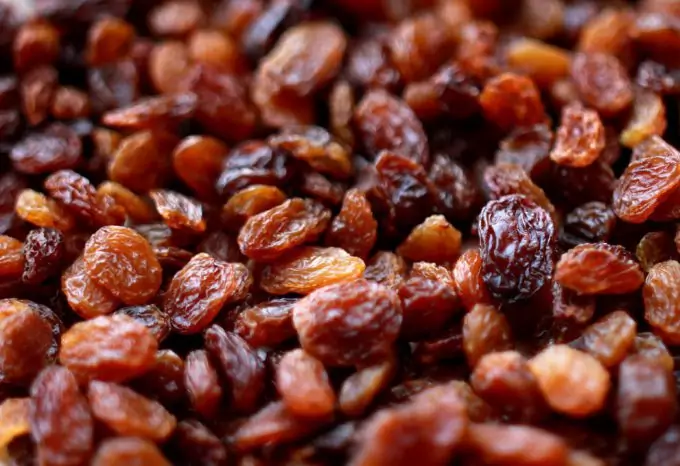
- You will need to remove the seeds when you wash your grapes thoroughly. If you have a dehydrator at home, simply place the grapes on the trays. Set the dehydrator to 135º F. If you don’t have temperature settings on your dehydrator, choose the “fruit” setting.
The entire process will take about 24 -48 hours. If you have tried raisins before (which you almost certainly have), then you’ll know when your grapes have turned into raisins.
The raisins should be squishy, but relatively hard, wrinkled, and of course small. As a reference, 2 pounds (about 1 kg) of grapes will turn produce 16 ounces (450 g) of raisins.
Bananas are another fruit with high caloric content. Preparation is also not difficult.
- Peel and slice the bananas in 1/4 inch thick coins. Place them on the tray. Again, set the temperature at about 135º F and wait for about 8 to 12 hours. Because they contain less water, they will dehydrate more quickly than grapes.
Next, we’ll need to dehydrate our high-calorie vegetables. Let’s start with potatoes.
- Begin by washing them. Then, peel them and cut them to quarter cubes. Boil the potatoes for a few minutes. Then, remove them from the heat and let them cool. Then, it’s time to place them in the fridge overnight.
- The next day, shred the cooked potatoes in a food processor or blender. They should look like shredded cheese.
- Then, prepare your dehydrator’s trays and load them with the potato shreds. Set the temperature to about 125 º F (or ‘Vegetables’). When they are ready, they should look like dried spaghetti.
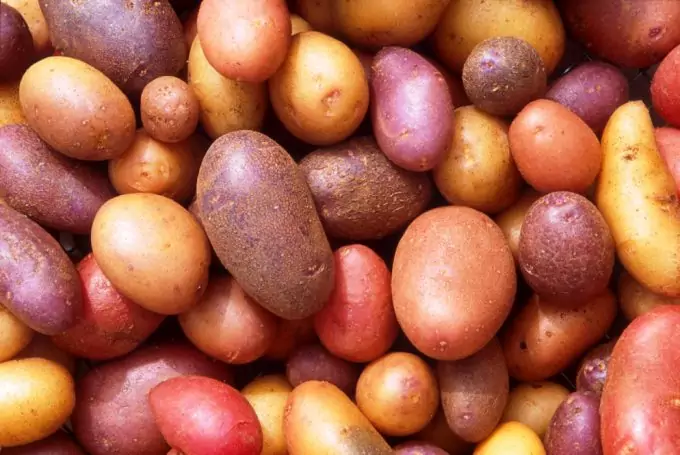
For more dehydrated food recipes, see our article here.




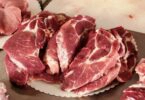
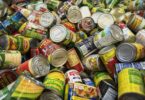


Wow! I learned so much from this article. I have some issues with freeze drying as I have had several failed attempts. I’ll try dehydrating when I get the chance.
I’m glad it helped Jason! Let us know how it went with dehydrating.
As a person who struggles with weight gain, thank you. I love eating vegetables and your article will certainly help with getting bulkier.
I also find drinking milk really useful when it comes to gaining weight.
In addition, calorie dense foods can improve memory, boost immune systems and lower blood pressure.
Dried fruits pack a lot of calories and nutrients into a small amount of food, because they have most of its water removed. But as you said about raisins, dried fruits are a concentrated source of calories, so you have to keep your portions under control, so you don’t end up having stomach troubles.
Dried fruits should be consumed in moderation, since they are nutrient dense, have lots of sugar, and thus calories. It will be wise to consume approximately 20 grams.